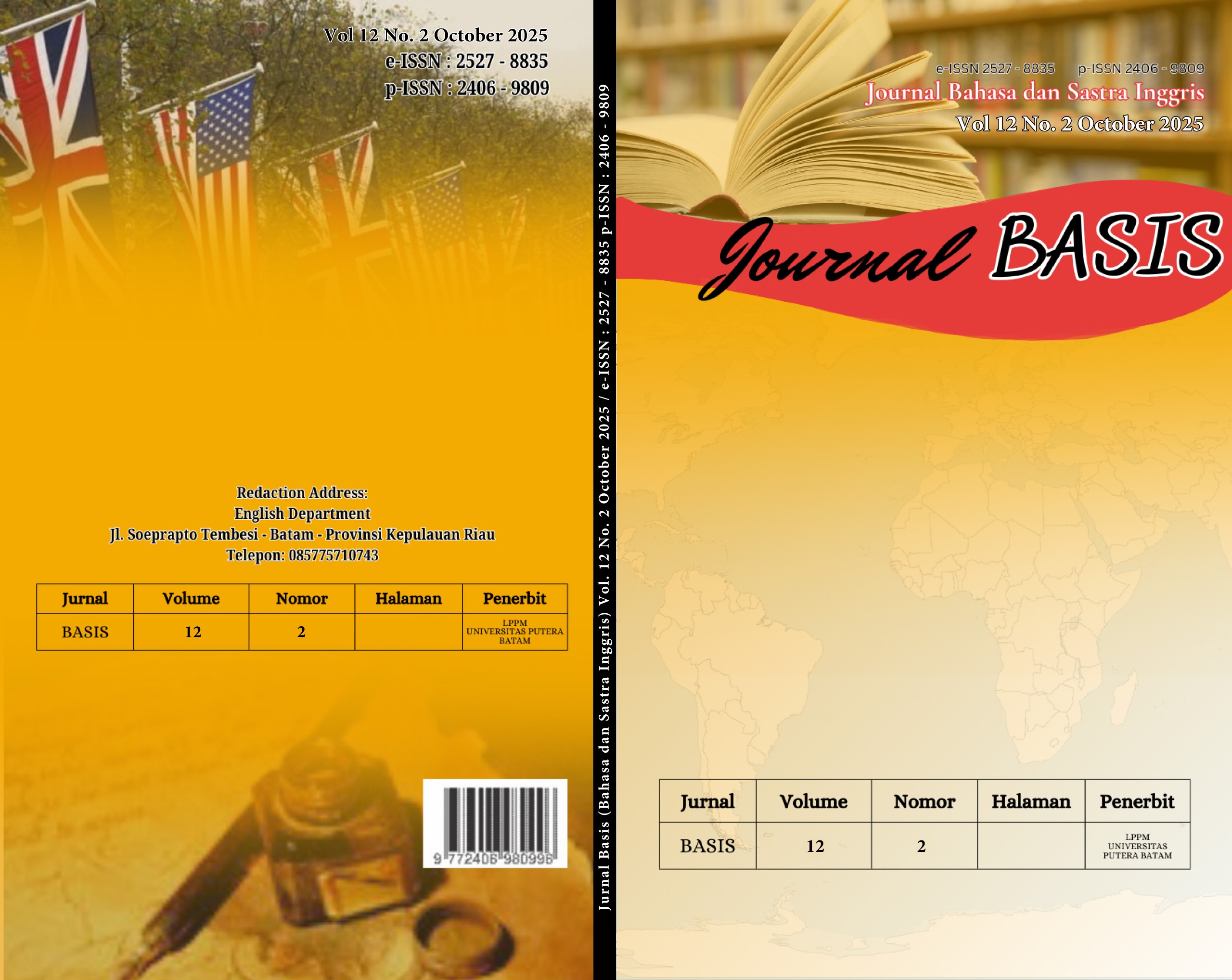TOXIC MASCULINITY PORTRAYED BY HOMELANDER’S CHARACTER IN THE BOYS GRAPHIC NOVEL
DOI:
https://doi.org/10.33884/basisupb.v12i2.10129Keywords:
Toxic Masculinity, Graphic Novel, Gender Relations, The BoysAbstract
This study explores the concept of toxic masculinity as portrayed in The Boys graphic novel, focusing on the character Homelander. Toxic masculinity refers to harmful behaviors and attitudes—such as dominance, violence, and misogyny—that stem from traditional expectations of masculinity. Using theoretical frameworks by Kupers and Connell, the research employs a qualitative descriptive approach, analyzing all seventy-two issues of The Boys. Data were collected through close reading of the graphic novel, review of existing literature, and examination of dialogue that reflects toxic masculinity. The study addresses two research questions: (1) How is toxic masculinity represented through Homelander’s character? and (2) How does toxic masculinity manifest in gender relations within the story? The findings reveal that Homelander embodies three key aspects of toxic masculinity: misogyny, violence, and dominance. These traits are supported by twenty-two textual examples from the graphic novel. Regarding gender relations, the study identifies three patterns shaped by toxic masculinity: power relations, production relations (control over roles and resources), and cathexis (emotional or sexual attachments influenced by dominance). These are illustrated by seven examples from the text. In conclusion, The Boys uses Homelander to vividly depict toxic masculinity and its harmful impact on gender dynamics. The graphic novel thus serves as a critical commentary on destructive masculine norms in contemporary society.
References
Connell, R. W. (2005). Masculinities (2nd ed.). Polity Press.
Creswell, J. W. (2014). Research design: Qualitative, quantitative, and mixed methods approaches (4th ed.). SAGE Publications.
Cornwall, A. (1997). Men, masculinity, and gender in development. Gender and Development, 5(2), 8–13. https://doi.org/10.1080/741922351
Harrington, C. (2021). What is ‘toxic masculinity’ and why does it matter? Men and Masculinities, 24(2), 345–352. https://doi.org/10.1177/1097184X20943254
Itulua-Abumere, F. (2013). Understanding men and masculinity in modern society. Open Journal of Social Science Research, 1(2), 42–45. https://doi.org/10.12966/ojssr.05.05.2013
Kupers, T. A. (2005). Toxic masculinity as a barrier to mental health treatment in prison. Journal of Clinical Psychology, 61(6), 713–724. https://doi.org/10.1002/jclp.20105
Kupers, T. A. (2017). Gender and domination in prison. Western New England Law Review, 39(3), Article 5. http://digitalcommons.law.wne.edu/lawreview/vol39/iss3/5
Kimmel, M. S. (2011). The gendered society (5th ed.). Oxford University Press.
Lorber, J. (1994). The social construction of gender. Vail Ballou Press.
Syarifah, S., Mutiah, & Santi, D. E. (2024). Toxic masculinity: Negative attitudes towards gender-based professions. International Journal of Education Elementaria and Psychologia, 1(5), 271–282. https://doi.org/10.70177/ijeep.v1i5.1305
SMPsychotherapy & Counseling Services. (2022, November 2). Undoing toxic masculinity helps men’s mental health. https://psychotherapyandcounselingservices.com/en/undoingtoxic-masculinity-helps-mens-mental-health/













 JURNAL BASIS (BAHASA DAN SASTRA INGGRIS)
JURNAL BASIS (BAHASA DAN SASTRA INGGRIS)
